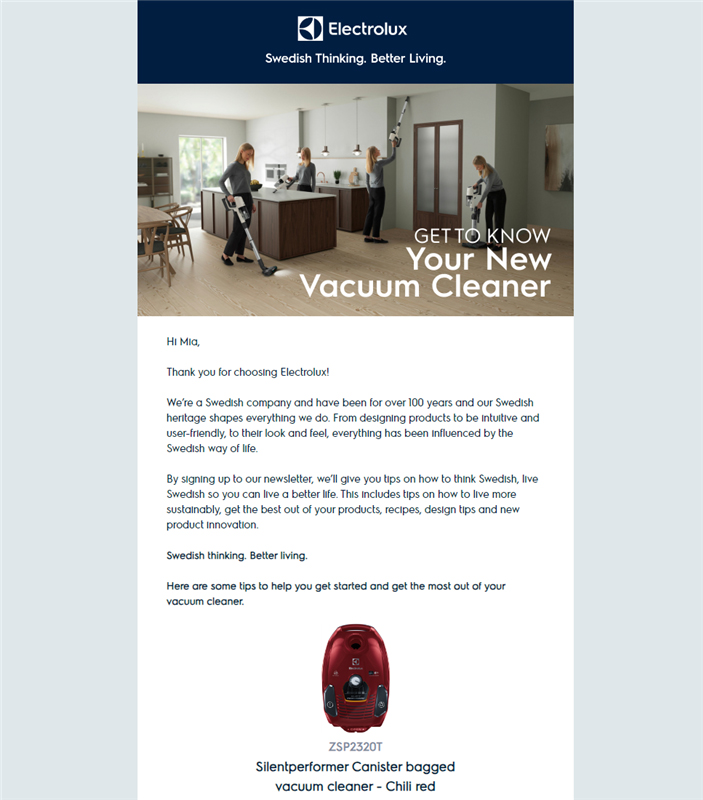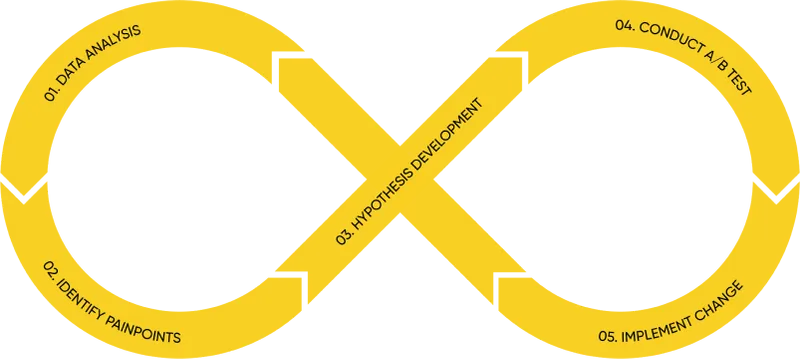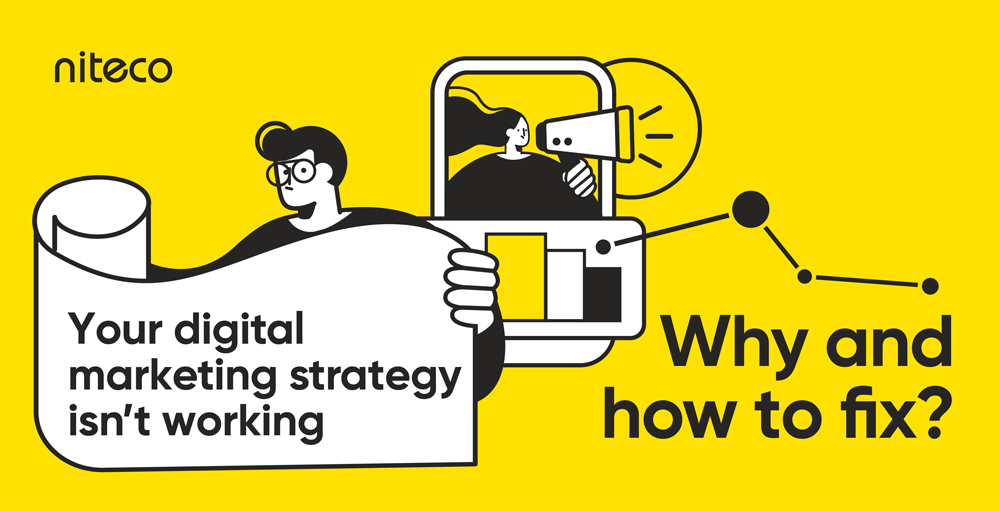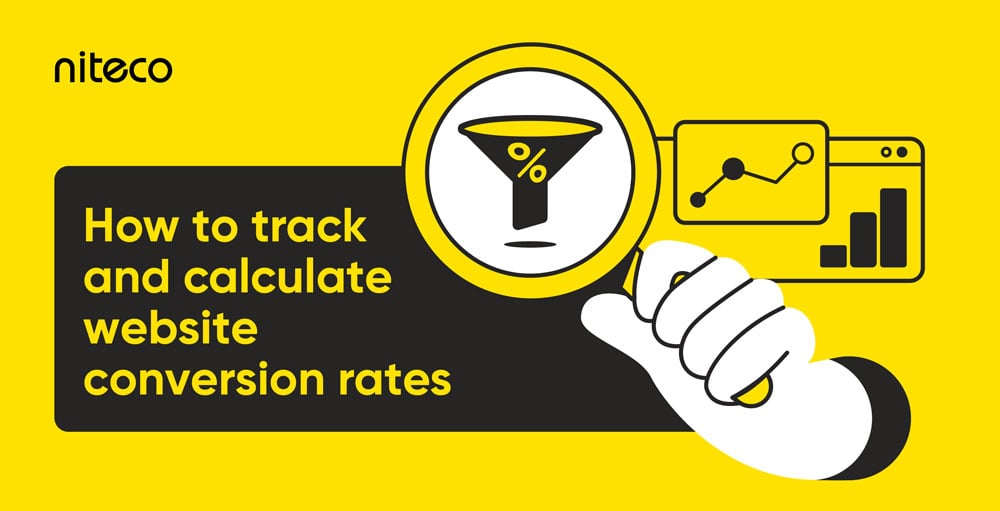Let’s face it - digital marketing shouldn’t just be busy; it must be profitable. We’re talking about Return on Investment (ROI) - the metric that tells you precisely how much revenue your campaigns deliver for every dollar invested. For instance, if you spend $1,000 on a campaign that generates $5,000 in revenue, your ROI is 400% - a clear win.
If your digital efforts fail to bring financial results, it’s time to rethink the playbook. In this article, we’ll break down the digital marketing best practices that actually move the needle, the tools that give your efforts a serious edge, and share actionable strategies that help turn engagement into revenue.
What is ROI-driven digital marketing and why it matters
ROI-driven digital marketing is your ultimate compass in the world of online campaigns.
But here’s the catch: tracking the wrong metrics can lead to misguided decisions. Many marketers still chase vanity numbers like impressions or followers. Meanwhile, data shows that 83% of marketing leaders now consider demonstrating ROI as their top priority, and 64% of companies base future marketing budgets on past ROI performance (Firework, 2024).
Email marketing is a prime example of ROI potential. When properly tracked and optimized, it returns an average of $36 for every $1 spent (Litmus, 2023). But without measuring key metrics - like customer acquisition cost (CAC), lifetime value (LTV), and conversion rates, you can’t truly optimize for ROI. This incredible potential highlights why focusing on the right email marketing metrics can deliver real value to your bottom line.
Best practices for ROI-driven digital marketing campaigns
So, you're convinced that ROI is the heartbeat of successful digital marketing. But how do you actually make it happen? It's time to move from theory to action. Mastering your return on investment isn't about magic; it's about disciplined execution of proven strategies.
Here are the best practices that will guide you in building truly ROI-driven campaigns.
1. Set measurable goals
The first step toward any ROI-driven campaign isn't just activity; it's clarity. Vague objectives like “increase brand awareness” won’t cut it.
Before launching a single ad or crafting an email, you must define what success looks like in quantifiable terms. This means setting SMART goals: Specific, Measurable, Achievable, Relevant, Time-bound.
Are you aiming for a 20% increase in qualified leads next quarter? A 15% reduction in customer acquisition cost? Or a 10% uplift in average order value (AOV), a direct surge in completed orders, or even just boosting your ‘add to cart’ conversions within 30 days? These clear objectives become your north star, allowing you to effectively track progress, prove value, and justify further investment.
2. Target and segment your audience strategically
Marketing to “everyone” is marketing to no one. True ROI comes from connecting with the right people, at the right time, with the right message. This demands deep audience understanding, going beyond demographics to psychographics and behaviors. Once you know your ideal customer, audience segmentation is key. In fact, segmented campaigns can lead to up to a 760% increase in revenue, according to Campaign Monitor.
Divide your market into distinct groups based on shared characteristics like past purchase behavior or expressed interest. This allows you to tailor your messaging precisely, making campaigns incredibly relevant and significantly boosting engagement, conversion rates, and ultimately, your ROI.
3. Personalize and automate your campaigns
After segmenting, deliver highly personalized marketing experiences that truly resonate. Generic communication often gets ignored; tailored content builds connections. Personalize product recommendations, suggest relevant content based on journey stage, or offer unique promotions that speak directly to their needs.
The exciting part? Automation tools scale this, sending triggered emails, delivering dynamic content, or pushing targeted ads based on real-time user behavior without manual effort. It’s no surprise that 80% of marketing automation users report an increase in both leads and conversions, according to WinSavvy's 2024 report.

How Electrolux personalized their customer emails.
Pretty neat, right? That glimpse into Electrolux’s personalized emails shows the power of truly knowing your audience. But there’s a lot more to the story than just one email. Let’s take a look at how we managed to deliver such a result!
Proof in practice: The Electrolux marketing automation success
Facing stagnant email engagement across the APAC and MEA regions, Electrolux partnered with us to rethink their strategy - and the results speak for themselves. With our expertise in marketing automation and personalization, we rebuilt the client's underperforming email campaigns from the ground up - this time with data-driven precision.
- Segmentation with purpose: We analyzed customer behavior, purchase history, and engagement data to segment audiences across APAC and MEA markets. Each segment received content tailored to their region and interests.
- Localized personalization at scale: Content was localized and personalized - not just by name, but with product recommendations, region-specific messaging, and timing optimized for local engagement patterns.
- Smart automation workflows: We set up automated campaign flows triggered by user actions, like cart abandonment or product interest, to keep the experience timely and relevant - without manual follow-ups.
- A/B testing everything: Subject lines, email design, content blocks, and even send times were continuously tested and refined to identify what drove the most opens, clicks, and conversions.
And the results?
We turned an overlooked email channel into a high-performing marketing asset:
- 147% increase in open rates
- 104% uplift in click-through rates
- Increased product engagement and ROI visibility
4. Run A/B test and experiment continuously
Let’s be honest - even the most seasoned marketers don’t get everything right on the first try. That’s why A/B testing and ongoing experimentation is so important for ROI-driven campaigns.
By testing variations side by side, you get clear answers on what works best. And the more you learn, the better you can tweak your campaigns, ditch what’s underperforming, and keep improving your results.

A/B testing: How Niteco approaches
Our A/B testing helped Electrolux achieve a remarkable 385% increase in conversion rates. Want to learn more about how we make this happen?
5. Track and optimize your funnel
To drive ROI, you need visibility across the entire funnel - from first click to final conversion - and fine-tune along the way.
Start by identifying where people drop off. Are your lead magnets effective? Is there friction between lead and customer stages? Metrics like visitor-to-lead and lead-to-customer conversion rates can reveal where things go off track. Once you know where the funnel leaks, you can fix it - whether that means better content, stronger CTAs, or smarter follow-ups.
Take, for example, how we improved Electrolux’s “You May Also Like” section. What used to be an easy-to-miss spot has been transformed into a pop-up featuring personalized product recommendations. The result? Higher engagement, more clicks, and a noticeable boost in conversions. Want to see how we did it? Dive into the full story of our successful conversion rate optimization for Electrolux.
Essential digital marketing tools for maximizing ROI
You'll need the right digital marketing tools to turn ideas into impact, track results, and adjust on the fly, helping you plan smarter and perform better. Here are the must-have platforms to maximize your ROI:
|
Category |
Tool |
How it helps improve ROI |
|
Analytics |
Tracks user behavior across web/app platforms to optimize conversion paths and reduce drop-offs. |
|
|
Google Tag Manager |
Enables custom tracking without developer help and faster, more flexible campaign optimization. |
|
|
Looker Studio (formerly Google Data Studio) |
Visualizes performance data in dashboards and reports for better decision-making. |
|
|
Hotjar |
Offers heatmaps, session recordings, and feedback tools to reveal user experience issues and optimization opportunities. |
|
|
SEO |
Semrush |
Conducts keyword research and competitor analysis to increase search visibility and organic traffic. |
|
Ahrefs |
Provides backlink audits, keyword insights, and content exploration to drive targeted traffic and help improve search rankings. |
|
|
Screaming Frog SEO Spider |
Crawls your site to identify technical SEO issues such as broken links, duplicate content, crawl errors, and redirects. |
|
|
PPC |
Google Ads |
Manages pay-per-click campaigns with advanced targeting, bidding strategies, and conversion tracking to ensure ad spend delivers value. |
|
Social media management |
Hootsuite |
Schedules, publishes, and monitors content across platforms; tracks engagement and helps optimize posting times and formats. |
|
Buffer |
Simplifies content planning and analytics to enhance post performance and reach. |
|
|
Marketing automation |
HubSpot |
Automates lead nurturing, email workflows, and CRM integration to streamline campaign execution and track ROI across touchpoints. |
|
Mailchimp |
Delivers personalized email automation based on user behavior to drive retention and sales. |
|
|
CRO |
Optimizely |
Facilitates A/B testing, personalization, and experimentation to fine-tune digital experiences and increase conversion rates. |
|
Content Management Systems (CMS) |
Optimizely |
Combines content creation with testing and personalization for optimized user journeys. |
|
Contentful |
Provides flexible, structured content delivery across channels, enabling scalable, ROI-focused experiences. |
Learn more about how Optimizely A/B Testing unlocks higher ROI.
Conclusion
High-ROI campaigns aren’t built on guesswork - they’re driven by smart strategies, sharp insights, and the right tools. When every move is backed by data, results follow.
Ready to turn your marketing into a revenue engine? Connect with our experts and let’s make ROI happen.
FAQs about ROI in digital marketing
A "good" ROI is subjective and varies by industry, campaign type, and business goals. However, WebStrategies notes that a common benchmark many businesses aim for is a 5:1 ratio (for every $1 spent, $5 is returned). Some highly effective campaigns can see 10:1 or more, while others might find 2:1 acceptable if the long-term customer value is high.
Use the formula: ROI = (Net profit – Total costs) x 100.
Track conversions, attribution, and customer lifetime value using tools like Google Analytics, HubSpot, or your CRM to get accurate insights into what’s working.
- Targeting the wrong audience or using overly broad segments
- Not setting clear, measurable goals (like conversions, leads, or sales)
- Ignoring data or not leveraging analytics to guide decisions
- Skipping testing and optimization, like A/B testing for emails or ads
- Relying on vanity metrics like impressions or clicks instead of ROI-focused KPIs



